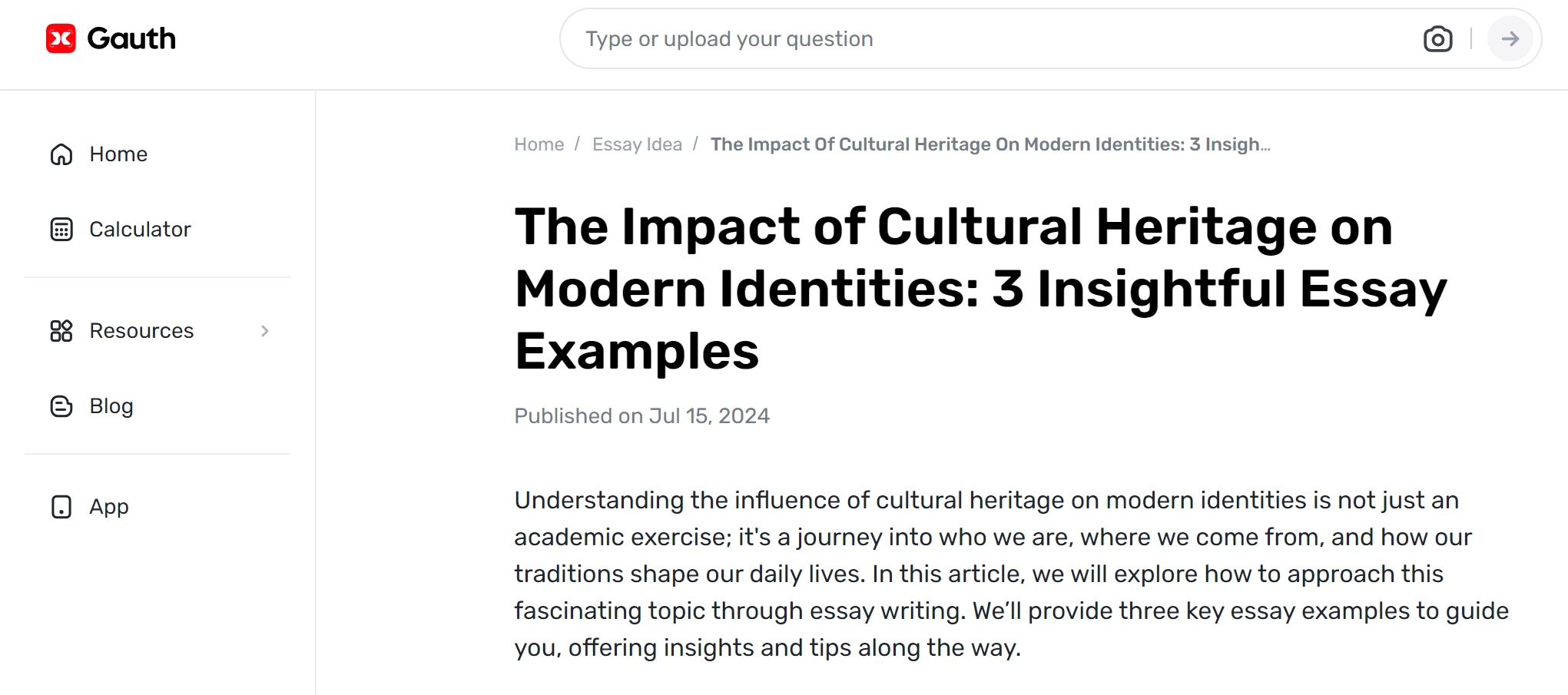Advanced characters are formed by various variables, including technology, politics, and social elements. However, one of the most significant and persevering impacts on identity is cultural heritage.
Social heritage, enveloping conventions, languages, artifacts, and historical stories, serves as a cornerstone for the improvement and maintenance of individual and collective personalities. The centrality of cultural legacy in forming modern identities is immense because it gives coherence, a sense of having a place, and a framework for translating the display and envisioning the future.
Cultural Heritage: The Foundation of Personality
Cultural heritage is the bedrock of personality, advertising a profound association with the past that shapes and maintains cutting-edge self-conception. It preserves conventions, values, and verifiable accounts, cultivating a sense of having a place and continuity. By connecting people and communities to their roots, the Impact of Cultural Heritage on Modern Identities, cultural heritage reinforces individual and collective characters.
Continuity
Cultural heritage offers a tangible and intangible connection to the past, cultivating a sense of progression that's crucial for personality formation. This association with history permits people and communities to understand their beginnings, appreciate their unique social accounts, and maintain traditions that have been passed down through generations. For occasion, Indigenous communities around the world often put extraordinary accentuation on protecting their cultural heritage, because it embodies their historical battles, achievements, and wisdom.
Connection to the Past
In contrast, the erosion or loss of cultural heritage can lead to a disconnection from history, coming about in character emergencies or sentiments of estrangement. For illustration, the effect of colonialism on various cultures included the suppression and erasure of inborn languages and customs. This disconnection from social legacy frequently cleared out colonized populaces battling to recover and recreate their personalities within the confront of forced outside societies.
Sense of Belonging
Cultural heritage moreover plays a crucial part in fostering a sense of belonging and community. Shared social hones, values, and images create a sense of unity among people who are distinguished with the same heritage. This communal character is especially apparent in diasporic communities, where cultural heritage becomes a imperative interface to the country and implies of protecting collective personality in outside situations.
Community
Additionally, cultural heritage can bridge generational separates, as conventions and stories are passed from more seasoned to younger eras. This transmission of social information not only preserves the legacy but also strengthens the personality of more youthful individuals inside the community.
System for Interpreting the Present
Cultural heritage provides a system for interpreting the display and envisioning the long term. By understanding their social legacy, individuals and communities can navigate contemporary challenges with a sense of reason and heading. This is often especially apparent in the domain of social and political developments, where cultural heritage regularly serves as a source of motivation and authenticity.
Envisioning the Longer-term
For occurrence, the Respectful Rights Development within the United States was profoundly established in the African American social legacy, drawing on authentic encounters of servitude and resistance to battle for equality and equity. Additionally, modern developments for inborn rights regularly invoke social legacy to declare sovereignty, arrive for rights, and conservation of conventional information.
Challenges
Whereas the centrality of cultural heritage in forming advanced characters is significant, it also presents challenges and openings. The quick pace of globalization and mechanical headway can undermine the conservation of cultural heritage, as conventional hones and dialects confront the chance of being eclipsed by prevailing worldwide societies. In any case, global Openings for the revitalization and dissemination of social legacy.
Opportunities
In addition, cultural heritage isn't inactive; it advances and adjusts in reaction to changing social and natural settings. This energetic nature of social legacy permits advanced personalities to be both established in convention and open to development. For occurrence, modern craftsmanship shapes regularly draw upon conventional social themes joining present-day strategies and subjects, making new expressions of character that reverberate with both chronicled and modern encounters.
How to Type in an Essay Utilizing the GAUTH Method
By taking these steps, you'll be able to viably utilize the GAUTH strategy to type in a well-organized and powerful exposition.
Step 1: Accumulate and Organize Data
The primary step in utilizing the GAUTH strategy for paper composing is to assemble and organize your data. GAUTH stands for Gathering, Analyzing, Understanding, Changing, and Highlighting. Start by collecting all significant information, realities, and sources related to your exposition point. Audit the collected data. Recognize key focuses, and contentions, and prove that bolster your proposal articulation. Ensure you have an intensive understanding of the data you have accumulated.
Step 2: Change and Structure Your Paper
The other step includes changing the accumulated data into an organized paper. Start by laying out your paper. Make a presentation that incorporates your proposition articulation, a body with well-organized sections that back your proposition, and a conclusion that summarizes your contentions and repeats the proposition in light of the proof displayed. Guarantee you cite all sources precisely to maintain a strategic distance from plagiarism. Use the fitting quotation fashion as required by your scholastic institution.
Step 3: Highlight and Refine Your Essay
The ultimate step is to refine your exposition and highlight key focuses to form your contentions compelling. Audit your draft for clarity, coherence, and conciseness. Check for linguistic blunders, spelling botches, and accentuation issues. Make essential corrections to make strides the in general stream and coherence of your exposition. At last, edit your exposition numerous times. Ensure your exposition is cleaned and presents a solid, cohesive contention.
Conclusion
The significance of cultural heritage in forming cutting-edge characters is multifaceted and enduring. It gives a sense of coherence and association to the past, cultivates having a place and community, and offers a system for interpreting the display and envisioning the future. Despite the challenges posed by globalization and mechanical progression, cultural heritage remains an imperative and energetic drive within the development of advanced personalities.


